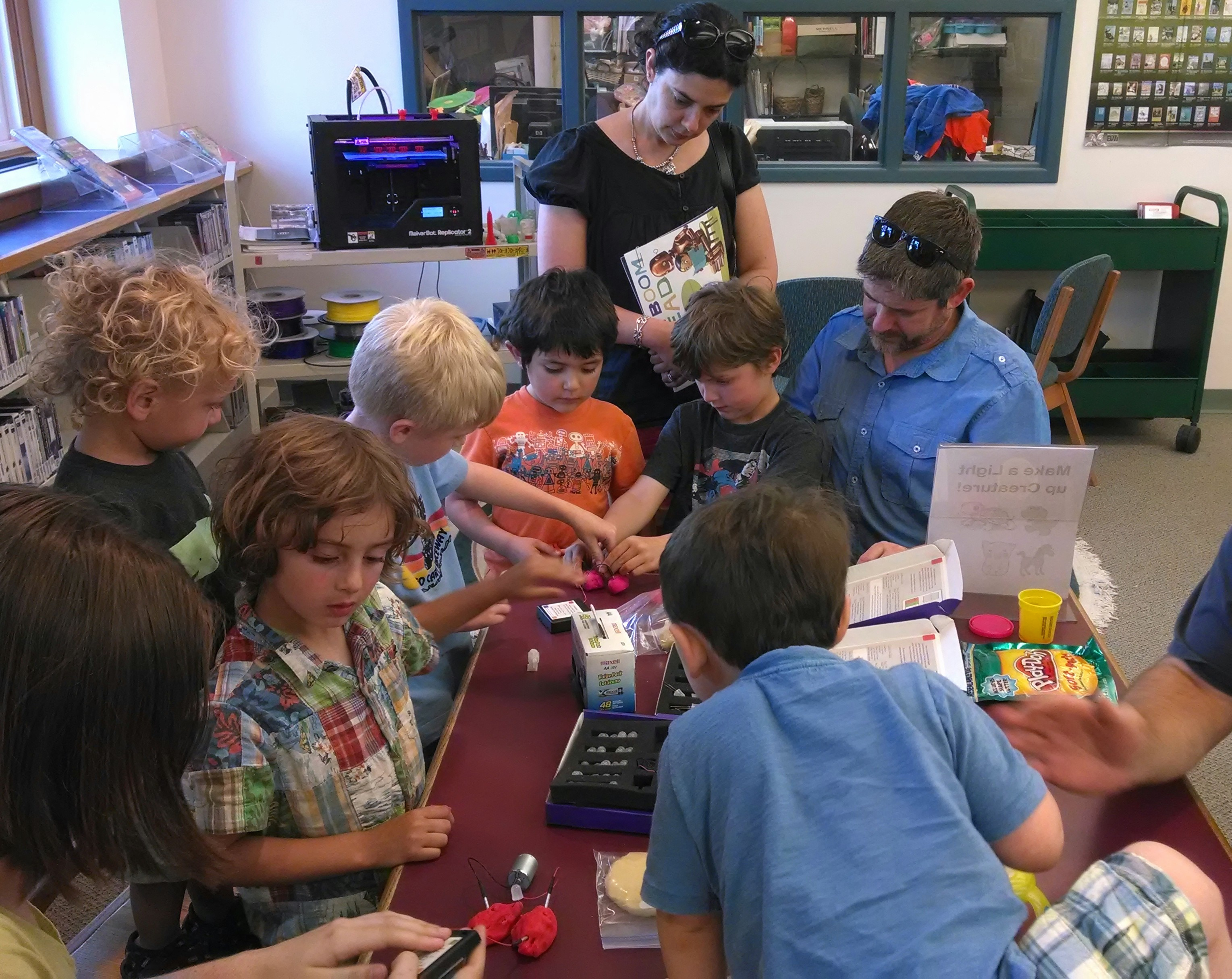
The Maker Education Initiative (Maker Ed) was formed in 2012 in response to President Obama’s “Educate to Innovate” campaign. The goal of “Educate to Innovate” is to move American students from the middle to the top of the pack in science and math achievement over the next decade. By building a maker network dedicated to providing creative learning opportunities to youth nationwide, Maker Ed is one of the non-profit organizations that is fostering students’ interest in science, technology, engineering, and math (STEM) through hands-on and interactive programming and activities.

Making at Keene Public Library, a Maker Corps host site. (Photo by Gail Zachariah, Keene Public Library)
Over the past two years, Maker Ed’s Maker Corps program has worked through 50 host sites in 24 states to reach more than 140,000 children. Their Maker AmeriCorps VISTA program – a collaboration with the Corporation for National and Community Service – currently provides opportunities for students to engage in making in ways that promote creativity, innovation and problem solving in eight communities around the country with an emphasis on reaching youth in high poverty areas.
As part of the commitments made by agencies, non-profit organizations, industry and educational institutions during the 2014 White House Science Fair, Maker Ed announced plans for a free online Resource Library to support educators. I sat down with Trey Lathe, the Executive Director of Maker Ed, to hear more about the recent launch of this new project and how it is helping to broaden participation and engagement in STEM, a focus of last year’s Science Fair.
Tom Kalil: First of all, what is Maker Ed?
Trey Lathe: Maker Ed is the national education nonprofit for the Maker Movement whose mission is to create more opportunities for all young people to develop confidence, creativity, and interest in STEM, art, and learning as a whole through making.
To achieve this mission, we are helping to develop a network of educators, youth-serving organizations, statewide afterschool networks, corporations, foundations, and makers seeking to accelerate and deepen the Maker Movement. Our work includes developing and managing maker education programs at partner sites, facilitating professional development workshops for maker educators, and most recently, connecting educators with the information they need through our Resource Library.
Tom: Tell me about Maker Ed’s Resource Library.
Trey: Maker Ed’s Resource Library is a dynamic and interactive digital archive intended to help people start and expand their efforts to promote making in education. Our site already contains more than 90 resources in five categories including tools and materials for making and research on the impact of the Maker Movement on learning and education. Highlights include Dale Dougherty’s “We Are Makers” TED Talk, a guide to making in schools from Lighthouse Community Charter School, and access to Maker Ed’s popular Young Makers-Maker Club Playbook.
Tom: What prompted the decision to create a Resource Library?
Trey: We noticed that there was a great demand among the education community for high quality resources to help bring meaningful making experiences to youth of all backgrounds. We committed to creating the Resource Library at the 2014 White House Science Fair to help meet that demand and provide a centralized place where everyone interested in facilitating making experiences with youth can go for information and a supportive community. Our hope is that we will be able to reach at least 100,000 educators in 2015.
Tom: What’s next for Maker Ed?
Trey: At the White House Maker Faire last June, Maker Ed announced the launch of a campaign to create and expand a nationwide network of youth-oriented makerspaces. Many exciting developments will be taking place around that campaign, but one highlight to look out for is the updated version of our Makerspace Playbook, which will be designed to better help educators and community members establish youth-oriented makerspaces in their own communities.
Since the first-ever White House Maker Faire, federal agencies, cities, universities, non-profit organizations and companies around the country have been stepping up to expand access to the resources, technologies and knowledge to facilitate making. You can read about some of these commitments here. To share what your organization is doing, email us at maker@ostp.gov.
Tom Kalil is Deputy Director for Technology and Innovation at OSTP.

